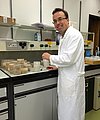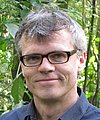Professor Nobuhiro Suzuki ¶

Group of Plant/Microbe Interactions, Biotic Stress Unit, Institute of Plant Science and Resources (IPSR)
Okayama University, Japan
Fellowship Period: 06.2019-11.2019
Dr. SUZUKI received a Ph. D (1989) in virology from Tohoku University in Sendai, Japan. He currently serves as a full professor of IPSR, Okayama University and teaches a few courses to undergraduate and graduate students. SUZUKI Laboratory focuses on characterization of diverse viruses infecting phytopathogenic fungi and exploration of the interplays among plants/fungi/viruses. Recent achievements include the discovery of a neo-virus lifestyle exhibited by a (+)ssRNA virus and an unrelated dsRNA virus in a plant pathogenic fungus and of multilayer antiviral defense in fungi involving Dicer.
Activities within WSL Fellowship ¶
The ascomycetous fungus, Cryphonectria parasitica, causes one of the most destructive tree diseases, chestnut blight. Several viruses such as the prototype hypovirus CHV1, have previously been shown to reduce virulence (hypovirulence) of the host fungus. This property of viruses prompts many researchers to applied studies on biocontrol of chestnut blight as well as basic studies on both the fungus and its viruses. Despite the fact that C. parasitica supports the replication of many viruses, studies using living trees or at the field level was limited to those with CHV1.
Here we tested diverse viruses for their hypovirulence induction, biocontrol potential, and in-tree spread using living trees in a greenhouse. The seven examined viruses are: CHV1 and its mutant, CHV1-Dp69, Cryphonectria hypovirus 2 (CHV2), CHV3, Cryphonectria mitovirus 1 (CpMV1), mycoreovirus 1 (MyRV1), and Rosellinia necatrix partitivirus 6 (RnPV6). These viruses are different from each other in genome structure. The collaborative research with Dr. Rigling showed their different in-planta behaviors and classified the viruses into four groups: I, CHV1, CHV1-Dp69, and CHV2; II, MyRV1; III, CHV3 and CpMV1; IV, RnPV6. The viruses of Group I had great biocontrol potential; that is, they could protect trees from the challenge by a virulent fungal strain, induce hypovirulence and spread efficiently in trees. Whereas MyRV1 (Group II) could induce high-levels of hypovirulence, it showed much less biocontrol potential, likely because of their inefficient virus spread. Group III showed poor performance in hypovirulence induction and bicocontrol, while they could move efficiently in trees. While RnPV6 (Group IV) was able to induce a moderate level of hypovirulence, it showed poor biocontrol potential possibly due to its inefficient in-tree spread. Thus, it is suggested that to exert great biocontrol effects viruses must be able to induce hypovirulence and spread efficiently in trees.




